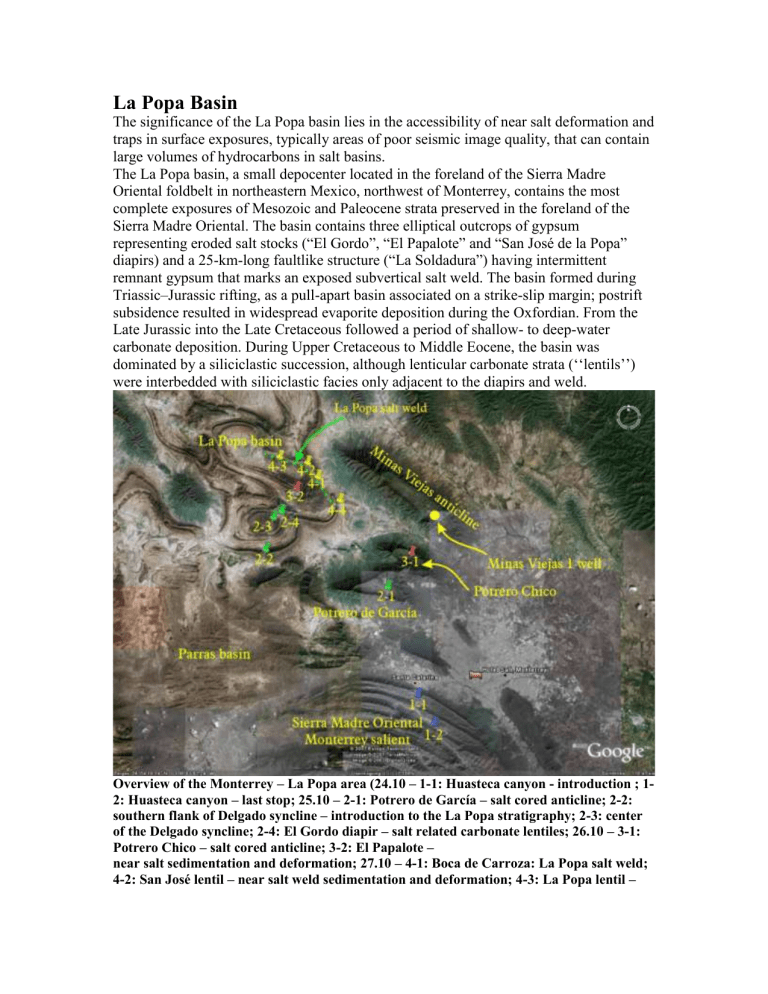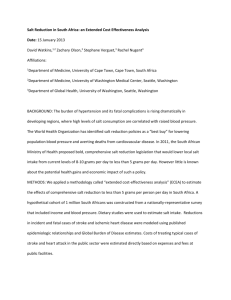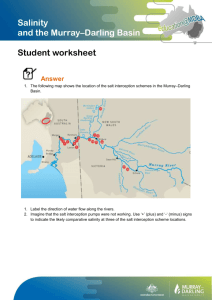Information - La Popa Basin

La Popa Basin
The significance of the La Popa basin lies in the accessibility of near salt deformation and traps in surface exposures, typically areas of poor seismic image quality, that can contain large volumes of hydrocarbons in salt basins.
The La Popa basin, a small depocenter located in the foreland of the Sierra Madre
Oriental foldbelt in northeastern Mexico, northwest of Monterrey, contains the most complete exposures of Mesozoic and Paleocene strata preserved in the foreland of the
Sierra Madre Oriental. The basin contains three elliptical outcrops of gypsum representing eroded salt stocks (“El Gordo”, “El Papalote” and “San José de la Popa” diapirs) and a 25-km-long faultlike structure (“La Soldadura”) having intermittent remnant gypsum that marks an exposed subvertical salt weld. The basin formed during
Triassic–Jurassic rifting, as a pull-apart basin associated on a strike-slip margin; postrift subsidence resulted in widespread evaporite deposition during the Oxfordian. From the
Late Jurassic into the Late Cretaceous followed a period of shallow- to deep-water carbonate deposition. During Upper Cretaceous to Middle Eocene, the basin was dominated by a siliciclastic succession, although lenticular carbonate strata (‘‘lentils’’) were interbedded with siliciclastic facies only adjacent to the diapirs and weld.
Overview of the Monterrey – La Popa area (24.10 – 1-1: Huasteca canyon - introduction ; 1-
2: Huasteca canyon – last stop; 25.10 – 2-1: Potrero de García – salt cored anticline; 2-2: southern flank of Delgado syncline – introduction to the La Popa stratigraphy; 2-3: center of the Delgado syncline; 2-4: El Gordo diapir – salt related carbonate lentiles; 26.10 – 3-1:
Potrero Chico – salt cored anticline; 3-2: El Papalote – near salt sedimentation and deformation; 27.10 – 4-1: Boca de Carroza: La Popa salt weld;
4-2: San José lentil – near salt weld sedimentation and deformation; 4-3: La Popa lentil –
Eocene continental sedimentation and salt weld; 4-4: boca de Potrerillos: SE end of the weld).
Deformation in the La Popa basin is a result of combined salt withdrawal/diapirism and regional contraction. Diapirism since Aptian can be documented from surface exposures
(Lawton et al., 2001), shortening occurred during the latest Cretaceous to Eocene and was accommodated primarily by salt-cored detachment folding represented by the weld
(Rowan et al., 2003).
The field trip shows in several outcrops, phenomena related to passive diapirism of the
“El Gordo” and “Papalote” diapirs, such as stratigraphic trapping, near salt deformation, and also structures as result of regional contraction as the “La Popa weld”.









